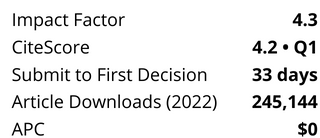Recent trends in off-flavor problems were investigated by a nationwide questionnaire survey targeting 239 drinking water treatment plants (DWTPs) maintained by 79 regional water suppliers (RWS) in Japan. The results indicated that 43 of 79 (54%) RWS and 89 of 239 (36%) DWTPs were affected by off-flavor problems in a recent 2-year period (October 2010–September 2012). Off-flavor incidents occurred in all regions in Japan. Most DWTPs affected by off-flavor incidents take in water from closed water areas, such as dams and lakes, where phototrophic microorganisms, such as cyanobacteria and algae, can grow easily. The most common off-flavor was an earthy–musty odor, while a fishy smell was also reported in some cases. The common producers of geosmin were Anabaena spp., while those responsible for 2-methylisoborneol were Phormidium spp. and Oscillatoria spp. The off-flavor events frequently occurred during summer and early fall months (June–September). The water temperature and pH of raw water for the production of drinking water when off-flavor problems occurred were higher than those during normal periods. To eliminate off-flavor compounds, most DWTPs (about 58%) adopt powdered activated carbon treatment, which considerably increases operational costs.
Skip Nav Destination
Article navigation
11 November 2015
This article was originally published in
Journal of Water Supply: Research and Technology-Aqua
Article Contents
Research Article|
December 01 2015
Nationwide survey of organism-related off-flavor problems in Japanese drinking water treatment plants (2010–2012)
Naohiro Kishida;
1Area on Water Management, Department of Environmental Health, National Institute of Public Health, 2-3-6 Minami, Wako, Saitama 351-0197, Japan
E-mail: kishida@niph.go.jp
Search for other works by this author on:
Masaki Sagehashi;
Masaki Sagehashi
2Department of International Health and Collaboration, National Institute of Public Health, 2-3-6 Minami, Wako, Saitama 351-0197, Japan
Search for other works by this author on:
Hirokazu Takanashi;
Hirokazu Takanashi
3Department of Chemistry, Biotechnology, Chemical Engineering, Graduate School of Science and Engineering, Kagoshima University, 1-21-40 Korimoto, Kagoshima 890-0065, Japan
Search for other works by this author on:
Naoshi Fujimoto;
Naoshi Fujimoto
4Department of Brewing and Fermentation, Tokyo University of Agriculture, 1-1-1 Sakuragaoka, Setagaya-ku, Tokyo 156-8502, Japan
Search for other works by this author on:
Michihiro Akiba
Michihiro Akiba
1Area on Water Management, Department of Environmental Health, National Institute of Public Health, 2-3-6 Minami, Wako, Saitama 351-0197, Japan
Search for other works by this author on:
Journal of Water Supply: Research and Technology-Aqua (2015) 64 (7): 832–838.
Article history
Received:
March 15 2014
Accepted:
October 21 2014
Citation
Naohiro Kishida, Masaki Sagehashi, Hirokazu Takanashi, Naoshi Fujimoto, Michihiro Akiba; Nationwide survey of organism-related off-flavor problems in Japanese drinking water treatment plants (2010–2012). Journal of Water Supply: Research and Technology-Aqua 11 November 2015; 64 (7): 832–838. doi: https://doi.org/10.2166/aqua.2014.171
Download citation file:
Sign in
Don't already have an account? Register
Client Account
You could not be signed in. Please check your email address / username and password and try again.
Could not validate captcha. Please try again.




%20cropped.png?versionId=5947)